
P-CNS news bulletin – Winter 2023
Working in partnership with the Lifestyle Health Foundation to deliver Person-Centred Lifestyle Health Solutions
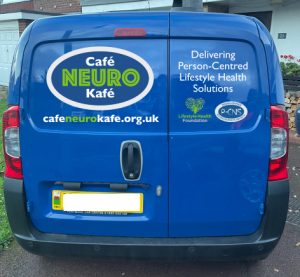 We are excited to be kicking off 2023 with something just that bit different: the Cafe Neuro Kafe. This a public-professional engagement initiative being developed in partnership with the Lifestyle Health Foundation, founded in 2021, to ‘deliver’ Person-Centred Lifestyle Health Solutions. It is also being supported by a new online venture www.ketobakery.co.uk, hence the ‘Kafe’ in both the logo and website cafeneurokafe.org.uk, which is under development. Sales generated from the ketobakery.co.uk will help to fund this project. One of the aims for the Cafe Neuro Kafe, is to provide an engaging ‘high street’ model that encourages a more person-centred care approach in the provision of information and education to the people who form the ever growing neuro community. We are delighted to be starting this project in the home town of P-CNS Exec Director, Tonbridge, Kent.
We are excited to be kicking off 2023 with something just that bit different: the Cafe Neuro Kafe. This a public-professional engagement initiative being developed in partnership with the Lifestyle Health Foundation, founded in 2021, to ‘deliver’ Person-Centred Lifestyle Health Solutions. It is also being supported by a new online venture www.ketobakery.co.uk, hence the ‘Kafe’ in both the logo and website cafeneurokafe.org.uk, which is under development. Sales generated from the ketobakery.co.uk will help to fund this project. One of the aims for the Cafe Neuro Kafe, is to provide an engaging ‘high street’ model that encourages a more person-centred care approach in the provision of information and education to the people who form the ever growing neuro community. We are delighted to be starting this project in the home town of P-CNS Exec Director, Tonbridge, Kent.
The publication of Best Practice and person-centre Community Rehabilitation Standards
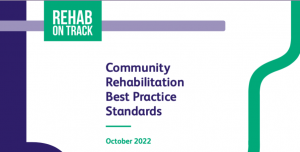 As some of you We are excited to be kicking off 2023 with some of you reading this will know, the P-CNS is a member of the Community Rehabilitation Alliance, which is comprised of over 50 organisations, most charities. The Alliance is committed to improving the provision of accessible, high-quality and person-centred community rehabilitation services. We at the P-CNS are delighted to have contributed to the development of recently published CRA “Best practice standards”. These standards provide recommendations to guide the development, delivery and monitoring of high-quality person-centred rehabilitation. To read more about this work and the standards, click on the image on the main reception (home) page of www.p-cns.org.uk.
As some of you We are excited to be kicking off 2023 with some of you reading this will know, the P-CNS is a member of the Community Rehabilitation Alliance, which is comprised of over 50 organisations, most charities. The Alliance is committed to improving the provision of accessible, high-quality and person-centred community rehabilitation services. We at the P-CNS are delighted to have contributed to the development of recently published CRA “Best practice standards”. These standards provide recommendations to guide the development, delivery and monitoring of high-quality person-centred rehabilitation. To read more about this work and the standards, click on the image on the main reception (home) page of www.p-cns.org.uk.
Person-Centred Care on the agenda at Neuroconvention 2023
Neuro Convention, which takes place on the 22nd and 23rd of March at the NEC showcases the latest  technology and innovations in the neurological sector with the ultimate goal of improving patient outcomes. The show focuses on four key areas of neurology: Rehabilitation, mental health, diagnostics and brain and spine injury. This year, the P-CNS is organising and running a panel discussion on the new CRA Best Practice Community Rehabilitation standards. The panel will include specialist neuropsychologist and P-CNS steering committee member, Dr Anita Rose along with P-CNS Exec Director Neil Bindemann and joined by other members of the CRA. The session will include an opportunity for the audience to engage in a discussion with the panel, to share thoughts and ideas on how best to implement the new standards.
technology and innovations in the neurological sector with the ultimate goal of improving patient outcomes. The show focuses on four key areas of neurology: Rehabilitation, mental health, diagnostics and brain and spine injury. This year, the P-CNS is organising and running a panel discussion on the new CRA Best Practice Community Rehabilitation standards. The panel will include specialist neuropsychologist and P-CNS steering committee member, Dr Anita Rose along with P-CNS Exec Director Neil Bindemann and joined by other members of the CRA. The session will include an opportunity for the audience to engage in a discussion with the panel, to share thoughts and ideas on how best to implement the new standards.
Trauma-informed Practice: Sharing a passion for person-centred care
Some of you reading this may have already sp otted on social media that Anita and Neil took part in a podcast that was released a few weeks ago. In a fascinating conversation organised with expert brain injury solicitor Hokman Wong, from Bolt Burdon Kemp, all three share their thoughts on trauma-informed care, covering issues such as:
otted on social media that Anita and Neil took part in a podcast that was released a few weeks ago. In a fascinating conversation organised with expert brain injury solicitor Hokman Wong, from Bolt Burdon Kemp, all three share their thoughts on trauma-informed care, covering issues such as:
- the meaning of trauma;
- how psychological trauma can cause neurological conditions (like FND);
- why asking about a person’s emotions supports a more person-centred approach;
- the importance of wholistic treatment to achieve the best outcome for brain injury patients
Anita also explains why she feels it is important (and how) to find out ‘who the person is’ before the consultation focuses on what happened.
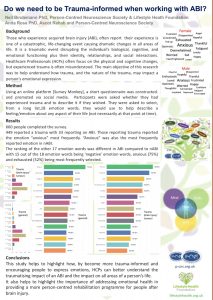 The podcast which is available from the BBK website or via the likes of Spotify where it is listed under the BBK Free Speech Podcast, begins with a short discussion on the data and findings presented in a poster: “Do we need to be trauma-informed when working with ABI?” The poster was presented at the UKABIF Acquired Brain Injury Summit in Manchester last November, and can be viewed from the UKABIF website.
The podcast which is available from the BBK website or via the likes of Spotify where it is listed under the BBK Free Speech Podcast, begins with a short discussion on the data and findings presented in a poster: “Do we need to be trauma-informed when working with ABI?” The poster was presented at the UKABIF Acquired Brain Injury Summit in Manchester last November, and can be viewed from the UKABIF website.
How trauma-informed health professionals are stimulating more person-centred health solutions, 27th June 2023, Edgbaston Cricket Stadium, Birmingham
This is the theme for our conference being run in partnership with the Lifestyle Health Foundation. We will be sending out further details in the coming weeks.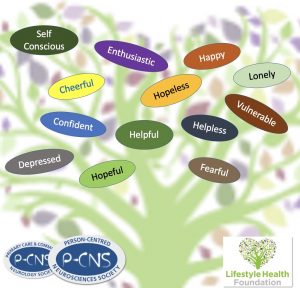
We are currently building a programme that will enable you to hear from leading experts, including members of our own steering committee, who will be sharing how their living experiences continue to guide them in becoming more person-centred. These are people such as Dr Jonny Acheson, nurse Clare Lindley, both diagnosed with Parkinson’s, and Prof Gareth Noble who, out of his ‘neurodiversity’ experience stimulated the Hive Alliance.
The day is being designed for people to share thoughts and experiences, to come and network, and offer various practical pointers that support physical, mental and emotional wellbeing, especially after receiving life-altering medical news.
Partnering with Integrative & Personalised Medicine 2023
Taking place from 29th June to 1 July at the QEII Centre, London, the Integrative & Personalised Medicine Congress will be highlighting the latest research highlighting the benefits of a more integrative approach to supporting mental health.
Personalised Medicine Congress will be highlighting the latest research highlighting the benefits of a more integrative approach to supporting mental health.
Look out for a further email on this event in the next few days, which includes details of how to book you place at a special discounted rate.
If you would like to read feedback from the delegates who attended the 2022 conference, go to this link, https://www.ipmcongress.com/testimonials
A Face to Face Rehabilitation experience – delivered virtually!
 We are delighted to be inviting you to join an online webinar with James Coleman on the 8th of March. James is the creator of an app called face2face, which he has designed to support the rehabilitation of people with facial weakness resulting from the likes of a stroke.
We are delighted to be inviting you to join an online webinar with James Coleman on the 8th of March. James is the creator of an app called face2face, which he has designed to support the rehabilitation of people with facial weakness resulting from the likes of a stroke.
In 2014 James worked on a project organised by Nottingham Trent University to see if it was possible to track someone’s facial features with a special depth-sensing camera, as they were performing facial exercises. The project was a success but after a short 2 week trial with a handful of stroke survivors, the project was concluded and nothing further came of it. The organisers of the project moved on to other things.
Then in 2017, when Apple released the iPhone X James realised that the technology used in FaceID was the same as the technology used by the Nottingham Trent project. He waited to see if anyone would follow up on that original project by applying the same idea to a phone. Over the next 5 years, no-one did, so in May 2022 James took the plunge and started working on it himself, in his spare time!
To come along and learn more about the latest version of his app, please register here.
And finally, a fun(d)raising event with a difference.
The Tonbridge Teafest, which was originally scheduled to take place last autumn, and postponed to Sat 29th April (due to the passing of the Queen) is a one day ‘fun(d)raising’ event being organised by Neil Bindemann. Come and enjoy a variety of local music groups who will be playing at various ‘kakestations’, around the town. The Tonbridge Teafest combines Neil’s trumpet playing, with a new found interest in baking kakes ie ketostyle. He’s organising the Teafest to simply say thank you for the support he has received from the people behind two charities, Brainstrust and Matthews Friends; people who give so much support and help to those also diagnosed with a brain tumour, but who have perhaps been less fortunate, in terms of the nature of the tumour, than Neil. To read more, but also if you can’t make it to Tonbridge on the 29th April, and would like to support his fundraising effort, please visit https://www.justgiving.com/crowdfunding/tonbridge-teafest.
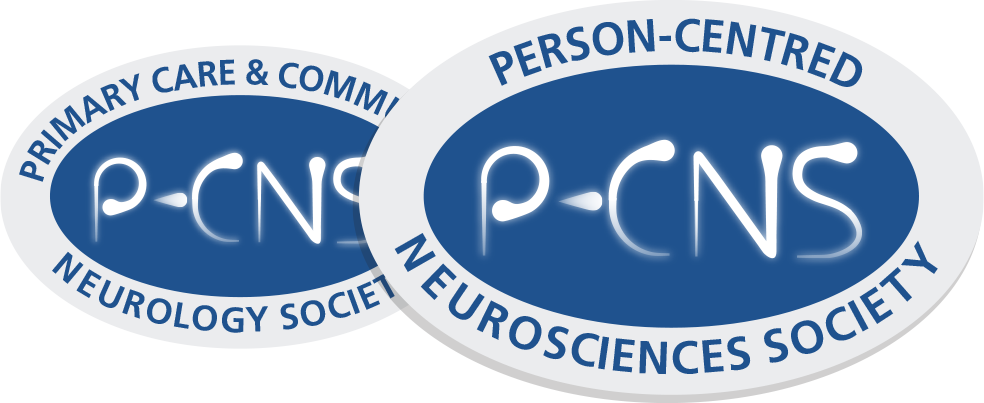
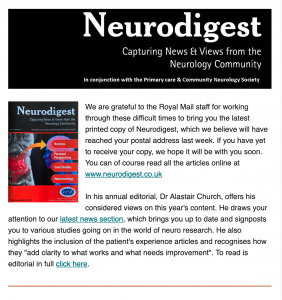

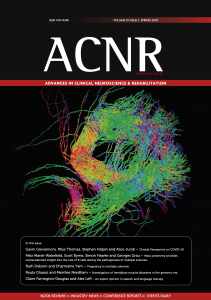
.png?width=1200&upscale=true&name=neuro%20prepop%20(1).png)

